|
January 9, 2014
|
Vol 4, Issue 2
|
|
|
|
|
Take A Fresh Look
at Oakland
News from
Mayor Jean Quan
& Friends
|
|
|
|
|
Greetings!
Please take the newsletter survey above, we are planning to change the format of the newsletter based on your input.
Why Is Crime Down?
The New Year brought a flurry of articles looking at declining homicides and crime in Oakland. Overall crime was down for the first time in years and homicides were dramatically down, the lowest level since 2004. The trends are continuing into the New Year. Although the trend has been strong since last spring, except for the East Bay Express, there was little coverage. So many people are asking me why crime is down. This is a short answer:
- We have invested much of the City's economic growth into increasing the police force and giving them more resources. We have started our 4th straight police academy after 4 years without. We have also hired more civilian staff to support the police and they going on line soon.
- We have reorganized the police force to use our police more effectively. The 5 areas with geographic accountability are helping to build closer ties with the community and more cooperation with the police.
- The Ceasefire Program, focused on the most violent criminals, is making a big difference. Good description below in David Muhammed's piece.
- At the same time we have focused more programs in neighborhoods with the highest unemployment, violence, drop-outs, etc. This includes a record number of summer jobs programs and other employment opportunities, Peace in the Parks program, Friday night Peace Walks and more. See the Job Fair announcement below.
USA TODAY ran a story in their weekend edition looking at homicide rates nationwide in 2013. Among the cities they looked at, Oakland had the biggest drop. Every single life is precious, and even one homicide is one too many, but we're encouraged by these signs of progress.
So while crime is down, we can do better in 2014. We will be putting much of our new efforts this year into improving job opportunities and unemployment. We are working on school to employment programs, including one for our police department and other city jobs. We need more mentors to increase school attendance and reduce drop outs. We will do more street outreach and work with those who have not finished high school and those who were formerly incarcerated.
Now in the 50th year since the March on Washington and the War on Poverty, we need to continue the work for Jobs and Justice.
Consider Mentoring a Young Person

January is Mentoring Month here in Oakland (in conjunction with National Mentoring Month). Our city can be very proud of the thousands of adults who volunteer in our schools or mentor a young person one-on-one. And yet there are more young people who could benefit from having a mentor. You can learn more about mentoring opportunities and meet representatives of some of the groups who recruit, train, and match mentors to those young people by attending the Mentoring Forum event on January 16 described below.
For a complete list of opportunities, go to www.oaklandvolunteers.org . And if you know anyone who volunteers in a classroom or mentors a child or young adult, please thank them for what they do.
"Managing Mentors" is the title of a presentation by John Anyosa, sponsored by the Oakland Mentoring Forum, Thursday, January 16, from Noon to 1:30pm at Oakland City Hall. John Anyosa has more than 10 years of experience in volunteer programs for community-based organizations. Currently, he is volunteer recruiter for the Alameda Court Appointed Special Advocates (CASA).
|
 | |
Mayor Jean Quan
|
This My Word article by David Muhammed does a good job explaining the city's Ceasefire Program, one of the main initiatives that helped us attain this year's dramatic drop in homicides.
Combined efforts working to stem Oakland's crime
By David Muhammad. Oakland Tribune My Word
Based on news coverage in the Bay Area and throughout the country, most people would probably say Oakland is more violent than ever, that homicides in murder-capital Chicago are out of control and that juvenile crime is spiking. Yet, the facts show that this is all wrong.
Oakland has experienced a 33 percent decrease in homicides in 2013 compared with the previous year, with more than 40 fewer killings. This makes the lowest homicide count in Oakland since 2004.
Violent crime is down significantly throughout the country. Reasons for the increase in safety are widely debated. In Oakland, halfway through the year the city was on target to have an increase in crime. So in the past six months, the reductions have been astronomical. It's no coincidence that it was six months ago that the city began the process to revamp its main violence reduction strategy, Oakland CeaseFire. A recommitment by the police department, service providers and community leaders to focus on the most violent groups and individuals has yielded huge fruit.
Chicago was declared the murder capital of the country this year. What was largely missed in that pronouncement was it was due to further reductions in homicides in New York City, not an increase in Chicago homicides. In fact, in Chicago there were 80 fewer murders in 2013 than in the previous year. Chicago ended 2013 with the fewest homicides on record in the past 40 years.
What do the police and many crime experts credit for the huge drop in violence in Chicago?
Same as in Oakland, a focus on the most violent groups and individuals: directly communicating to them that the violence must stop, offering services and supports, and following up with targeted enforcement.
Let me be clear. One murder anywhere is too much. Violence is still a crisis in America and especially in black neighborhoods. There must be far more resources invested in the most violent communities in America, which not coincidentally are also some of the most impoverished.
I have worked in the fields of criminal justice, youth development and violence prevention for the past 17 years. I have spent most of that time pointing out how very horrible violence is and how we need to recognize the crisis we are confronting. But it is also important to celebrate successes and recognize progress.
Another public misconception is also a good sign of future reductions in violence. Despite common assumptions, juvenile crime is plummeting. According to Department of Justice statistics, in the past 10 years there has been a 32 percent decline in juvenile crime in California.
In the past six years, there has been more than a 50 percent reduction in the number of juvenile filings in Alameda County. Meaning, since 2007, there has been a decline, by more than half, of the number of youths charged with juvenile offenses in the county.
According to data reported to the state attorney general's office, only 10 percent of all felony arrests made by the Oakland Police Department in 2012 were of juveniles. The numbers are similar in most big cities around the country. But even more surprising in Oakland, is that the average age of a homicide suspect in the city in the past two years has been 30 years old.
Youth violence is not the problem in Oakland.
With juvenile crime dropping, this is a sign that crime and violence in the future will only further decline.
So there is much to celebrate in the new year. Crime reduction strategies are working, our communities are safer, and our youth are better.
David Muhammad is the CEO of consulting firm Solutions Inc. He is the former chief probation officer of Alameda County Probation and the former deputy commissioner of New York City Probation.
|
| JUST FOR TEENS |
Oakland Public Library Announces Teen Design Competition
Are you artistic?
Do you love the library?
Are you 13-18 years old?
Oakland Public Library needs your original artwork!
Oakland Public Library is starting off 2014 with a fun contest for teens that allows them to make their mark on the Main Library... permanently! With a grant through Keep Oakland Beautiful, we are going to transform the drab cement trash cans outside of the Main Library on Madison Street into beautiful mosaic murals.
This competition is based entirely on teen input and creation, and is open to anyone between the ages of 13-18, as long as they live or attend school in Oakland. Youth across Oakland are welcome to enter the competition and are also invited to help create the mosaics.
Teens interested in submitting designs can choose from two possible layout options and can submit multiple entries:
Option One: Wraparound Panoramic design for an estimated size of 69"x30" which would cover the three panels of a trash container
Option Two: Individual Portrait Panel design to cover a 23"x30" surface
For sample templates and Design Submission Forms: www.oaklandlibrary.org/teendesign or the Main TeenZone, 125 14th Street, 2nd Floor.
All submissions (only paper copies are accepted) must be received in the Main TeenZone by 5:30pm on Feb 14, 2014.
For more info: www.oaklandlibrary.org/teendesign or Lana Adlawan, Teen Services Supervising Librarian, 238-7613 or LAdlawan@oaklandlibrary.org
BACK TO TOP |
| JOBS FAIR WITH NEW FOOTHILL SQUARE EMPLOYERS |
The East Oakland community has been waiting for more retail for decades. The new Foothill Square Shopping Center with a Foodsco grocery store, Ross, Anna Linen & Things, and a Wells Fargo branch will open in March. They are now hiring. This Wednesday there will be a community jobs fair for these employers and others. PLEASE PASS THE WORD.
BACK TO TOP |
|
 |
This publication is not produced at public expense.
Want to follow events as they happen?
During the week, I also post to my Facebook page: Facebook.com/mayorjeanquan.
|
|
Help Us Tell Oakland's Story,
Send This To A Friend
 |
|
Looking for Information About My Re-Election Campaign?
|
Follow the Mayor
| 
 
Subscribe to daily tweets
 View our press briefings, meetings & community events  Listen to the Mayor Tuesday mornings at 8:05 am on KGO 810 AM radio |
|
IN THE NEWS
| |
CITY NEWS
Oakland Sees Fewer Murders, Hopes for Better 2014
Joseph Mayton, BeyondChron.com
Jan. 7, 2014
Oakland Made Progress on Violent Crime in 2013
David Muhammad,
New America Media
Jan. 3, 2014
Re-Occupy Oakland: How retailers, grocers, restaurateurs, developers, and others are working to rebuild Broadway
Michael Howerton,
Oakland Magazine
Jan. 2014
Oakland, California - OK to Stay and Play
Emma Krasov, Art and Entertain Me blog
Jan. 3, 2014
GENERAL INTEREST
Oakland Zoo's Quarters for Conservation Program Raises More Than $100,000 for Animals in the Wild
via SFGate.com
Dec. 23, 2013, PRWeb
U.S. Immigration Investment Center Renovates Historic Oakland Hotel
The Star Phoenix
Dec. 24, 2013
Allen: Oakland City Hall marks 100 years
Annalee Allen, Oakland Tribune
Jan. 3, 2014
TECH & ECONOMIC DEVELOPMENT
Oakland is moving into the spotlight
Joe Gose, Sarasota Herald-Tribune
Jan. 6, 2014
ART
Badass Block: Grand Avenue Between Lake Park and Mandana
Sarah Medina, 7x7SF
Jan. 4, 2014
Free Little Libraries take off in the East Bay
Mike Rosen-Molina, Oakland Magazine
Jan. 2014
FOOD
Oakland restaurant week draws newcomers
Renée Frojo, SF Business Times
Jan. 3, 2014
Learning Wine Geography at The Barrel Room in Oakland
Emma Krasov, Art and Entertain Me blog
Jan. 6, 2014
|
|
SPOTLIGHT
|
First local 3-D Print Shop Opens in Oakland
For those of you Star Trek fans -- get ready for replicators. You may have read in recent times about 3-D printers. Well, they are here, and the Bay Area's first is right in Montclair. Stop by some time and check it out. And in the interim, here's a link to a recent ABC 7 piece on the new shop.
3-D Printer in Oakland
BACK TO TOP
|
|
OAKLAND ACCOLADES
|
Vote for Oakland
as the
Open Government City of the Year
Between now and Jan 10th, the annual GovFresh awards are live. And you have a chance to vote for Oakland as the Open Government  city of the year! You can nominate and vote for any city you like, but we'd love to see Oakland making it this year as number one! city of the year! You can nominate and vote for any city you like, but we'd love to see Oakland making it this year as number one!
In our partnership with Code for America and OpenOakland, we now have an on-line budget visualization, an application for tracking public records requests, and a tool to help neighborhoods adopt a storm drain. We also set up a question and answer site for citizens called answers.oaklandnet.com. And we are making more city datasets available to the public.
So please consider voting for Oakland -- you can give 3 of 5 votes to a single city -- and helping us move from 3rd place to 1st place.
BACK TO TOP
|
|
PET SPOTLIGHT
|
Finn has such beautiful brown eyes with gorgeous black markings below them that it looks like he's wearing makeup. But nothing is artificial about Finn, Including this low-key three-year-old pit bull terrier's friendly and affectionate nature. Finn came to OAS as a stray, and it's now time for him to settle onto a couch in his forever home for the holidays. And this just in: Finn has been sponsored, which means a generous donor has covered his adoption fees. Check out the lovable boy's photos and video here!
Oakland Animal Services
1101 29th Ave.
BACK TO TOP
|
|
|
|
1. DISCOVER OAKLAND -- This week and next
|
Editor's Note: Remember to check both the UPCOMING and the RECURRING sections, way down at the bottom, for additional events.
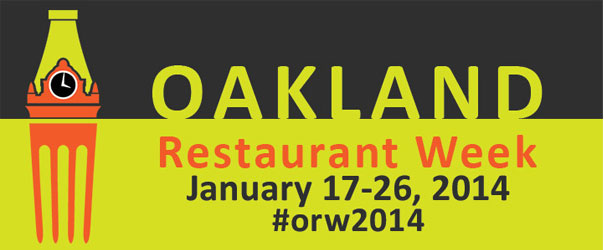
Oakland Restaurant Week,
Friday thru Sunday, January 17-26, various restaurants.
Foodies, rejoice! From January 17-26, over 50 top Oakland restaurants - including California Chef of the Year, Tanya Holland's B-Side BBQ - will celebrate the 4th annual Oakland Restaurant Week. With a growing number of participating restaurants receiving national media acclaim, Oakland has become one of the hottest culinary destinations of the year. The 10-day event lets food-lovers and adventurers experience Oakland's food renaissance through $20, $30 or $40 prix fixe lunches or dinners.
Click here for a list of restaurants and to book your reservations - which you should definitely do ahead of time!
 Friday Nights at the Oakland Museum with Off the Grid Food Trucks Friday Nights at the Oakland Museum with Off the Grid Food Trucks
every Friday, 5-9pm, Oakland Museum, 1000 Oak St.
Join OMCA and Off the Grid Food trucks on 10th Street every Friday for a family-friendly take on a festive night market. Savor California beer, wine and non-alcoholic beverages around the Koi Pond at the Blue Oak café pop-up. Bring the whole family to OMCA for a sampling of the best in Bay Area curbside cuisine!
What to expect this Friday, January 10:
- Twelve gourmet food trucks from Off the Grid featuring the best in local cuisine
- OMCA-in-the-Headlines, a special discussion series in Above and Below: Stories From Our Changing Bay, from 7 to 8 pm, this week on King Tides-the very tallest of waves-in the Bay Area, and how they are a preview for sea level rise
- Family-friendly drop-in art activity: create your mini dream world inspired by Dr. Martin Luther King, Jr. and the exhibition The Smallest of Worlds, from 5 to 8 pm
- Makers and Tasters Series ranging from beer brewing to book signings from 6 to 8 pm
- Local beer and wine specials in the Blue Oak beer garden
- DJs & live bands
- Dance instruction
- Extended hours in the galleries and special exhibitions
COST: Half-price gallery admission for adults; ages 18 and under are free. Admission for Members is always free. Cash bar. Prices vary for Off the Grid food trucks. Event parking is available at the Museum for a $5 flat fee after 5 pm. For more info, click here.
Jack of All Trades Market, 2nd Saturdays of the month, 11am-5pm, Jack London Square, foot of Broadway.
The market will feature a curated mix of local makers, indie designers, antiquers, collectors, artists, start-ups and more brought together by the Treasure Island Flea. This eclectic market will feature one-of-a-kind items, live music and several free D-I-Y workshops for all ages. Visitors can bike, ferry or drive to Jack London Square for the market that will take place on the second Saturday of each month.
For more info: www.JackofAllTradesOakland.com
|
|
FOR SENIORS
"Scary Potter" - An interactive presentation about elder financial abuse, Tuesday, January 14, 12-
 1pm, 2501 Harrison St. 1pm, 2501 Harrison St. Prescott Cole and Neil Granger from California Advocates for Nursing Home Reform will present their highly informative and entertaining "Scary Potter," on the topic of elder financial abuse. Cole is a senior staff attorney for CANHR and Granger works with CANHR as a consultant and expert witness in the field. Please feel free to invite friends and relatives to a presentation on this important topic. This event is FREE and open to the public. This is a part of our "Brown Bag Lunch" series, which means attendees are welcome to bring their lunch with them and eat during the presentation.
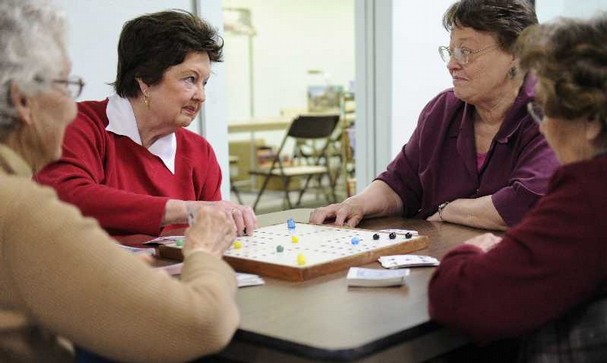 Board Game Days,
Every Wednesday, 11am-4:30pm, Hall 2, Downtown Oakland Senior Center, 200 Grand Ave.
Join others in rousing board games including Monopoly, Scrabble, Boggle and many more.
For more info: Jennifer King, Senior Center Director, jking@oaklandnet.com or 238-3284

Healthy Living For Seniors, 1st Tuesdays of the month starting January 7 (thru June), 10:30am, North Oakland Senior Center, located at 5714 Martin Luther King Jr. Way.
The UC Cooperative Extension will provide information about nutrition, exercise and health at the monthly event. There will be healthy cooking demonstrations, low cost recipes and gifts including measuring spoons and reusable grocery bags.
For more info: Mary Norton, Center Director, at mnorton@oaklandnet.com or 597-5085
FOR ADULTS
Hot Couture 2014: Fusion of Fashion & Fire, Friday & Saturday, January 10-11, 7-11pm, The Crucible, 1260 7th St. Three different shows each night at 7:30, 8:30 & 9:30
The Crucible's fiery fusion of fashion design and industrial art returns with two nights of wearable art, flame effects, performances, music, dance and more. Bay Area fashion designers and industrial artists have been collaborating for months to bring you one-of-a-kind pieces of wearable art melding haute couture concepts with fine and industrial arts. This multidisciplinary performance will feature first-ever public viewings of stunning, cutting edge looks, new staging, fire effects, and runways in our 56,000 sq. ft. West Oakland warehouse.
Cost: $40 General Admission, $100 VIP
For more info, click here.
Oakland Bowling League, Wednesdays thru January 15, 8-10pm, South Shore Lanes, 300 Park Street, Alameda.
Teams are invited to "Come out and Play the OPR Way."
For more info: Renee Tucker, Recreation Specialist, at rtucker@oaklandnet.com or 238-2952.
|
|
DANCING

Chicago Steppin' classes,
Thursdays, 8-10pm, Ira Jinkins Rec Center, 9175 Edes Ave.
The classes will be held every Thursday through August. Participants will enjoy great music, dancing and conversation while learning the art of the "Chicago Step."
For more info and to register: Donte Watson, Recreation Center Director, dwatson@oaklandnet.com or 615-5959
MUSIC
 Piedmont Piano Company Concert Series, 1728 San Pablo Ave. Piedmont Piano Company Concert Series, 1728 San Pablo Ave.Located in the Uptown, half a block from the Fox Theater, Piedmont Piano Company doesn't just sell beautiful, high-end pianos. Every month, they present music from local and international musicians. Here's a list of some upcoming concerts:
Jan 10 - Art Lande-Erik Jekabson Quartet
Jan 11 - Patrice Haan - CD release
Jan 12 - Michael O'Neill Quintet featuring Kenny Washington
Jan 18 - Dick Whittington Trio
Jan 31 - Rebecca Kilgore and Randy Porter
Costs vary, but typically range from $15 to $25
For more info: www.piedmontpiano.com
Jazz at the Chimes - featuring Vocalist Jamie Davis, Sunday, January 19, 2pm, Chapel of the  Chimes; 4499 Piedmont Ave. Chimes; 4499 Piedmont Ave.
Jazz at the Chimes kicks off its 2014 season with vocalist Jamie Davis. Jamie Davis' full deep baritone voice will resonate in the beautiful and historic landmark Chapel of the Chimes on Sunday, January 19th at 2pm. Joining Davis will be Roger Glenn on sax and vibes, John Groves on piano, Andrew Emer on acoustic bass and Larry Vann on drums. This will be a rare, intimate performance by Davis who usually fronts a big band. His program will consist of classic jazz performed with passion and joy that leave his audiences uplifted and "feelin' good...really good." A repertoire from Cole Porter to Stevie Wonder to Charles Mingus, confirms Davis possesses flexibility and sophistication. He has been described as "a fine wine which has stood the test of time, constantly innovating jazz classics, rolling out the blues and performing with one foot in the past and the other in today." Limited seating - First come first served. Plenty of free parking.
TICKETS: $15 general; $10 seniors (60+) and students - for concert and reception. Purchase tickets at the door. Cash only. Ticket sales begin at 12:30pm; Doors open at 1:30pm.
For more info: chimesjazz@gmail.com or 654-0123 or www.jazzatthechimes.com
MOVIES & THEATER
$5 Movie Day Every Sunday & Tuesday, Regal Cinema Jack London 100 Washington St.
Tired of shelling out $10 - $12 for movies in a theater? Then take advantage of the Regal, Jack London's all day $5 movie deal!
For more info: www.regmovies.com

The New Parkway, 474 24th Street
658-7900 or www.thenewparkway.com
If you haven't yet been to this movie theater, you really must go. Comfy (clean) couches, good food, and all sorts of themes. Check the website for all the specifics.
Check the website for all the specifics, but here's a general list of themes by day of the week.
Baby Brigade - is an opportunity for parents of young children to come to the movies. Instead of having to get a babysitter for your baby in order to do adult things, why not just bring your baby to the movies? We'll show some of our regular features, only we've got changing tables set up and an audience that understands if there are a few screams or whimpers along the way.
Doc Night - Weekly showing of one or more documentaries, often accompanied by a community discussion. Some of the screenings are one off presentations while others are part of a larger series. Always engaging, always pertinent, and almost always $6.
Parkway Classics - Cult favorites, party flicks, and rarely screened revivals from the relatively recent past, selected by Will "The Thrill" Viharo.
Family Classics - This time slot is geared towards the whole family with titles that are perfect for kids, tweens, and teens but also hopefully engaging for adults.
Spectrum Queer Media - Produced by Spectrum Queer Media, this weekly series is dedicated to the best of LGBTQ feature films and documentaries, often accompanied by speakers and/or discussion.
Thrillville Theater - Classic "indoor" drive-in movies from the vintage voodoo vaults of pop cinema history, programmed by Will "the Thrill" Viharo.
|
|
AT FAIRYLAND 
fairyland.org
Regular Events -- Saturday & Sunday, January 11 & 12
11am, 2pm & 4pm:
Puppet Show: The Dragon of Krakow. The Polish countryside is in a terrible uproar: Princess Lilliana doesn't want to be kidnapped by the local dragon, but she does want to let the town shoemaker know she has a crush on him. What's a girl to do? Why, ask for help from a statue of a magical mermaid, of course. Come see how a foolish dragon is taught a lesson.
12-2pm: The Marilynn O'Hare Arts & Crafts Center is open with activities geared toward children and their families.
1-1:20pm: Animal of the Day! Come up close and learn about one of our animal friends. Which one of Fairyland's feathered, furry or wooly creatures will it be today? Find out at the Humpty Dumpty wall.
1:30pm & 2:30pm: Owen Baker Flynn with his "World Premiere", a lively show featuring juggling, fire eating and a multitude of surprises
9777 Golf Links Rd
Animal Encounters,
Sundays, 11:30am and 12:15pm (for about 20 minutes)
Docent led live animal presentation: Wild animals need your help, come find out what you can do.
Learn about and meet some of our amazing animals close up. Our Program Animals are presented with fun facts and important messages; spend 20 minutes with us in the WildLife Theater! This program is free with regular Zoo Admission.
Conservation Speaker Series - Saving the Savannah!, Wednesday, January 15, 6:30-9:30pm.
The savannahs of Africa are in Peril, but there is hope. Learn about two innovative conservation projects: the Uganda Carnivore Program and the Reticulated Giraffe Project in Kenya. Oakland Zoo docent, Monica Tyler, and Oakland Zoo zookeeper, Elizabeth Abrams, will share their experiences working directly with these inspiring conservation partners.
Cost: $10-$20 members; $12-$20 nonmembers
Click here for more info.

"Horton Hears a Who" Zoovie Night, Friday, January 17, 6:30-9:30pm.
Put on your jammies and enjoy an evening of Zoovie magic with the whole family. Bring your pillows, blankets, and chairs and snuggle up in our auditorium for a specially selected animal-or nature-themed movie. Meet some of our nocturnal Education animals brought to you by Roosevelt, Oakland Zoo's costumed alligator mascot. Hot chocolate (with marshmallows, of course) and popcorn will be provided, but you are welcome to bring your own treats and traditional family movie fare. Let the show begin!
Click here for more info.
 AT CHABOT SPACE & SCIENCE CENTER AT CHABOT SPACE & SCIENCE CENTER
10000 Skyline Blvd.
For more info, click here.
 Moonlight Hike, Friday, January 10, 5-7pm Moonlight Hike, Friday, January 10, 5-7pmThe bright winter moon will be shining as we explore the redwoods from twilight to moonlight on an easy 3 mile hike. After the hike, stay and view the night sky through our telescopes (weather permitting) or tour the Telescope Makers Workshop. Hike will take place rain or shine.
Tickets: $10 (does not include admission into the Center); RSVP Recommended, space is limited!
Register online or call 336-7373
Click here for more info
Tyke Explorers Workshop, Tuesdays, 10am, 12:30pm, or 3pm. 
For ages 2.5-5 years. Expand your preschooler's universe by enrolling in our Tyke Explorers Program. Kids get to bring a special grown-up to share in the excitement of science and space. Classes are a combination of instructor-led lessons and self-guided, hands-on experimentation and exploration. For more info, click here.
JANUARY: Engineering Month!
Let's put our creativity and ingenuity to the test this month as we explore, build, design, and create!
Tuesday, January 7: Simple Machines
Explore the basics of physics and machines by discovering the power of pulleys, levers, inclined planes, and other simple machines.
Tuesday, January 14: Design Challenge!
Using a variety of found and recycled materials and of course your own inventiveness, build different structures that meet design challenges. These challenges might include marble mazes, bridges, roller coasters, and skyscrapers!
Tuesday, January 21: Rube Goldberg, Jr
This week we will watch several large Rube Goldberg Machines in action, and then built our own junior versions! Use all that you've learned about simple machines and designing to contribute to our class Rube Goldberg or create a contraption of your own.
 Laserium - The Cosmic Laser Concert 40th Anniversary Laserium - The Cosmic Laser Concert 40th Anniversary
Various days and times.
Experience this classic laser light show set to the beats of such rock icons as Pink Floyd and The Beatles. Immersed in the darkness of the planetarium, this stunning light show is music for your eyes. Whether you are a fan from the past or new to the show, LASERIUM draws you into the
light. Click here for more info.
Dinner, a Movie, and the Universe, Friday & Saturday evenings.
 The perfect date night experience is back! By popular demand, our unique after-dark offering has returned. Join us for a full-course dinner in our Skyline Bistro, enjoy our live-narrated Planetarium show Cosmos 360, and view the night sky through our telescopes (weather permitting). Reservations are not required, but strongly encouraged. The perfect date night experience is back! By popular demand, our unique after-dark offering has returned. Join us for a full-course dinner in our Skyline Bistro, enjoy our live-narrated Planetarium show Cosmos 360, and view the night sky through our telescopes (weather permitting). Reservations are not required, but strongly encouraged.
Costs (includes Admission, Dinner, and Planetarium Show)
Guests: $23 Adults / $16 Children
Members: $15 Adults / $11 Children
*Dinner only walk-ins welcome: $17 Adults / $13 Children
*Price does not include admission to the Center
For more info, click here.
|
|
OAKLAND MUSEUM
At the Oakland Museum, 1000 Oak Street
For more info: museumca.org
OMCA Family Drop-in Workshop: HistoryMakers/ScienceMakers Series, 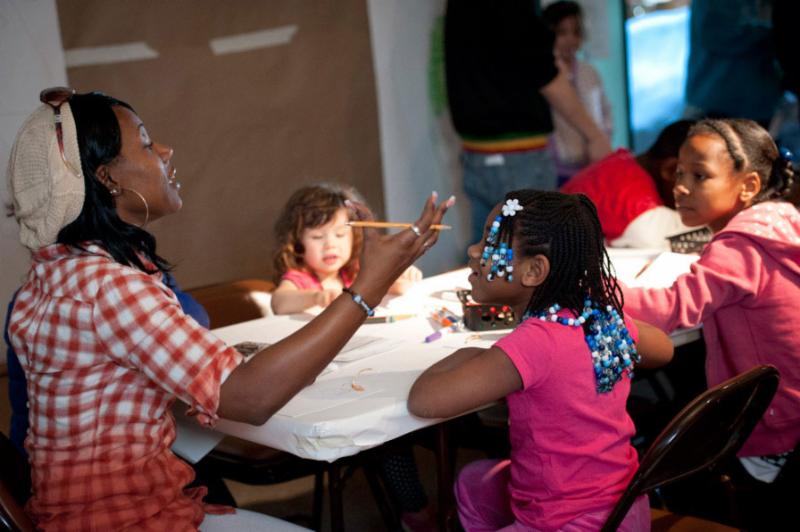
Sunday, January 12, 12-3pm.
Explore the science in you with hands-on activities. Play jeopardy and learn about the connections between history and science with representatives from the Museum of African American Technology Science Village. Included with Museum admission. Members are always free. No reservations required. All ages welcome.
Presented in collaboration with Museum of African American Technology Science Village.
A Cinematic Study of Fog in San Francisco
Now through June 29, 2014
Acclaimed filmmaker Sam Green and cinematographer Andy Black present a video work in OMCA's Gallery of California Art based on their ongoing investigation of fog - a remarkable weather phenomenon that profoundly characterizes the San Francisco Bay. Known for their work together on the Academy Award-nominated film The Weather Underground, and other pioneering, experimental documentary features, Green and Black showcase a visually compelling experience of fog and the rich feelings it evokes. At once sublime, quirky, and deeply existential, A Cinematic Study of Fog in San Francisco heightens our awareness of our environment and highlights how the complex systems of wind, air, and water around us engage the life of our minds and stir emotions. A Cinematic Study of Fog in San Francisco is presented in partnership with the Exploratorium's Bay Observatory and Cinema Arts Program. Click here for more info.
ART
2nd Annual Holiday Art Salon Exhibit, now thru Friday, January 31, Various Hours, Joyce Gordon
Gallery, 406 14th Street.
Browse a wide selection of unique art and gifts from over 20 local and national artists.
ART Exhibits at Oakland Public Libraries
ARiSE High School Student Art, through May 30, 2014, César E. Chávez Branch, 3301 East 12th St.
Art teacher Nils Heymann has curated a show by his students. Works include scratchboards, textural pieces, and other media. Pieces will be rotating in and out of the exhibit all school year in the TeenZone and the meeting room.
|
|
 AT OUR PUBLIC LIBRARIES AT OUR PUBLIC LIBRARIES
Many library events are recurring. Some are highlighted here temporarily, but be sure to check the last section (RECURRING EVENTS) for items no longer listed in this section and click here for a link to all library events.
Library events page: www.oaklandlibrary.org/events
90-Second Newbery Film Festival 3rd Annual 90-Second Newbery Film Festival
This Winter Break, it will be lights, camera, action for many talented local kids. The third annual 90-Second Newbery Film Festival is fast approaching, and that means it is time to get busy for any young bookworm who has the inkling to make a short film about a Newbery Award-winning title. 
The deadline for 2014 festival entries is January 20. (See link to rules and details, below.)
Films will screen locally at the Rockridge Branch Library, 5366 College Avenue, on Saturday, February 8, from 12 to 1:15 p.m.
The 90-Second Newbery Film Festival is a video contest in which filmmakers of any age make movies that tell the entire story of a Newbery award-winning book in 90 seconds or less. The results are compelling efforts by young directors, actors, screenwriters, and even animators. All ages welcome; best for ages 7 and up.
Nina Lindsay, Children's Services Supervisor at the Oakland Public Library, is thrilled the 90-Second Newbery Film Festival is making a stop at the Rockridge Branch as it makes its West Coast tour. "All the more reason for Oakland kids and teens (who we know can make some great videos) to submit an entry for consideration for the screening. We'd all love to see some local talent up there on the screen! And this winter, wonderfully, our libraries are not closed for furloughs; with the exception of the holidays we are OPEN through winter break... so if you need some Newbery books for ideas, you know where to find them."
For more info and instructions for entering your film: www.90secondnewbery.com
For more info about the Rockridge Branch screening: www.oaklandlibrary.org or contact Nina Lindsay, Children's Librarian, at 238-6706 or NLindsay@OaklandLibrary.org.
A SAMPLE OF THIS WEEK's EVENTS
Editor's Note: In the interest of space, we're removing the regular, recurring items we usually have in this section. The Libraries offer so many events -- best that you just check out their website for all the details: www.oaklandlibrary.org/events.
All Knit, Thursdays, 3:30-5pm, Lakeview Branch, 550 El Embarcadero.
Join our friendly volunteer facilitator to learn how to knit or improve your skills. For adults and children age 8 and up. Beginners through experts are welcome!
For more info: 238-7344
Make Art Using Recycled Materials with Re-Create, Friday, January 10, 2014 - 3:00pm, Dimond Branch, 3565 Fruitvale Ave. Oakland students (K-12) are invited to turn trash into artistic treasure in preparation for the City of Oakland's 2014 Re-Create Art Contest. Free two-hour workshops will be led by Pro Arts at nine Oakland Library branches. Make an amazing artistic piece at the workshop, and enter your creation in the Contest. Artwork will be juried. Art supply sets, theatre and museum passes will be awarded. All entries will be shown as part of the Re-Create Exhibition. Re-Create is sponsored by the City of Oakland Public Works Agency and produced by Pro Arts.
For more info: 482-7844
Tutoring Help at Asian Public Library!, Tuesdays, 6-7:30pm, Asian Branch, 388 9th Street Suite 190.
FREE tutoring every Tuesday night at Asian Branch Library! All subjects accepted. Space is limited!
Call 238-3400 to be placed on a waiting list.
Click here for more info.
eBook Help, Thursdays, 5:30-7:30pm, Main Library Computer Lab, 125 14th Street.
Get help downloading eBooks to your Kindle, Nook, smartphone, or laptop! We will help you get started with our rich collection of digital resources. Click here for more info.
Zumba!, Saturdays, 2:15-3:15pm, 81st Ave Branch Classroom, 1021 81st Avenue (at Rudsdale).
Join the library for Zumba, dance, and other exercises! Each class is led by an instructor and a video, making it easy to follow along. Classes are for Teens and Adults, or join for Family Dance Classes at 1pm. Click here for more info.
|
|
2. MLK Day Events
|

Arroyo Viejo Creek Work Day
Saturday, January 18, 9am start time.
Come to the Arroyo Viejo Creek in Knowland Park and experience the local habitat, while helping it thrive. Grab your gardening gloves and help clean up the creek. We work rain or shine, so come prepared!
Click here for more info.
2014 Day of Service - Montclair Community Work Day 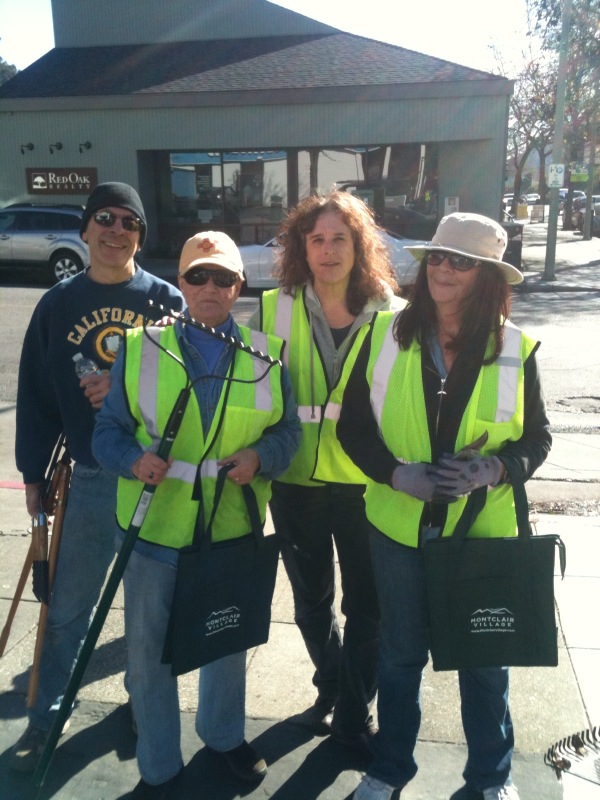
Sunday, January 19, 9am-1pm, 6300 Moraga Ave., Montclair Village (meet at the basketball court).
The purpose of the event is to improve infrastructure, clean and clear overgrowth of plants and trees, and remove trash and debris in Montclair Park and the walkways along Moraga. Most importantly, we seek to build community through a collective effort to beautify our neighborhood and park! Refreshments will be provided by Crogan's Montclair, Crown Wines and Spirits, Starbucks, Colonial donuts, and others. Bring gloves and any favorite sheers or pruning tools-rakes and bagging supplies will be provided.
For more information: info@montclairvillage.com or www.montclairvillage.com
APol Resource Connection Presents Courageous Conversations -- Healing the African American Family & Community with Dr. Joy DeGruy-Leary -- Train the Trainer Workshop
Sunday, January 19, 12-6pm, Taylor Memorial United Methodist Church, 1188 12th St.
Topic: Post Traumatic Slave Syndrome.
Tax deductible donation: $100 (includes workshop and lunch). CEUs are available.
Purchase tickets here.
For more info: Mona Williams, 290-4537, www.apolre.org or Sandra Sanders-West, 773-0462, www.taylorchurch,org
 In the Name of Love -- 12th Annual Musical Tribute In the Name of Love -- 12th Annual Musical Tribute
Sunday, January 19, 7pm, Scottish Rite Center, 1547 Lakeside Dr.
Living Jazz will present "In the Name of Love", the 12th Annual Musical Tribute honoring Dr. Martin Luther King, Jr. In the Name of Love remains Oakland's only annual non-denominational musical tribute to Dr. King. It is an extremely significant civic and cultural event,that pays tribute to Dr. King's message of community, equality and inclusion. Featuring Martin Luther McCoy, the Marcus Shelby Orchestra, Oakland Interfaith Gospel Choi, Oakland Children's Community Choir, and Nikki Thomas of KBLX.
Tickets: $23 in advance; $25 at the door
For more info:mlktribute.com
 MLK Day of Service at the Gardens at Lake Merritt and Lakeside Park MLK Day of Service at the Gardens at Lake Merritt and Lakeside Park
Monday, January 20, 8:30am-3pm, Lake Merritt Garden Center, 666 Bellevue Ave.
Come out to the Gardens at Lake Merritt and Lakeside Park to participate in the MLK Day of Service 2014 at the Gardens at Lake Merritt and Lakeside Park. Take part in planting, weeding, mulching, and more -- children are welcome. Please bring your own gloves and water bottle. Refreshments will be provided.
Please RSVP here.
For more info: Markus von Euw, 4271605 or sfpbayarea@gmail.com, www.allforgood.org
 BBBON District 7 Clean Up on G Street BBBON District 7 Clean Up on G Street
Monday, January 20, 9am-12pm, Meet at 88th Ave & G St.
Volunteers will pick up trash and litter in a 7-block area on G Street between 86th and 92nd Avenues.
To volunteer and for more info: Mary Forte, 612-3165, maryfforte@gmail.com
Celebrate Dr. King's Legacy: Past, Present, and Future
Monday, January 20, 1-3pm, Taylor Memorial United Methodist Church, 1188 12th St.
A free community event. With Reverend Andrea Davidson. Guest speaker: Dr. Joy DeGruy-Leary. Mistress of Ceremony: LadyRay (106 KMEL)
For more info and/or sponsorship: 444-6162 or www.taylorchurch.org
Oakland Museum of California: Celebrate MLK Day 
Monday, January 20, 12-3pm, Oakland Museum, 1000 Oak St.
Honor the memory and legacy of Dr. Martin Luther King Jr. at OMCA! Winners from Oakland Unified School District's Martin Luther King Jr. Oratorical Festival will present their award-winning poetry from 12:30 to 1pm. Create your own one-of-a-kind dream bottle to hold your dreams, hopes, and wishes. All ages are invited to join in, free with Museum admission.
For more info: museumca.org
BACK TO TOP
|
|
3. Community Policing
|

Mother Hopes $100,000 Reward and New Photo Will Lead to Arrest
These billboard signs and bus stop ads are going up this week paid for by Aya Nakano's mother and friends. They have raised a $100,000 reward.
With more homicide detectives and help from federal agents, the City's arrest rate for homicides is going up. A key factor is information from the community. On Wednesday OPD released a blurry photo of the silver four-door hatchback car with front-end damage that was taken on the 5800 block of Market St. near Stanford, June 12th at 11 pm.
http://www.insidebayarea.com/news/ci_24871486/emeryville-mother-launches-campaign-find-sons-killer
OPD Makes U-Visa Information Available
On Tuesday, November 19, the Oakland Police Department (OPD) added a new page to its website on the U-Visa program. A form of witness protection, the U-Visa is a non-immigrant, temporary visa, which allows a victim who has suffered substantial physical or mental abuse from certain crimes (specified in federal law), and who provides information that has, is or will assist law enforcement in the investigation or prosecution of the crimes, to remain in the United States for up to four years. The City of Oakland and OPD have been staunch supporters of the U-Visa program since it started back in 2007. The U-Visa program furthers the City's humanitarian policies of providing refuge to victims of human rights violations and crimes abroad. OPD encourages community members, especially those who are non-documented and in fear of deportation, to report crime and seek assistance with the U-Visa program.
To view OPD's U-Visa web page, click here.
For more info: Sgt. Holly Joshi, OPD Chief of Staff, hjoshi@oaklandnet.com or 238-3131.
BACK TO TOP
|
COMMUNITY MEETINGS & EVENTS
CeaseFire Oakland/LifeLines to Healing -- Walk our neighborhoods 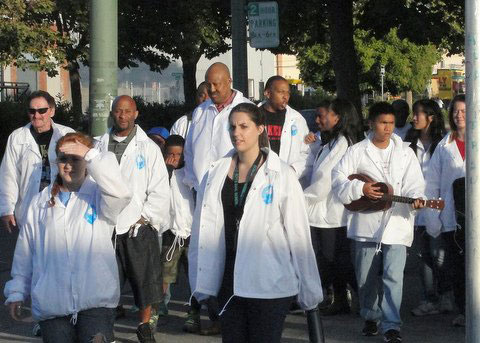
The City of Oakland and local faith-based organizations are continuing their neighborhood Night Walks on Fridays from 6:30 to 9pm -- just one of the ways that community members can get involved in Operation Ceasefire. These walks are organized by residents and faith leaders in areas where Ceasefire is focused. I join the walks at least once a month. Volunteers are trained in advance of the Night Walk and are accompanied by other volunteers for the  duration of the walk. The purpose of the Night Walk is to reach out to communities affected by violence and to take back the streets. I joined last Friday's walk, this was our orientation meeting. The next walks start from these locations: duration of the walk. The purpose of the Night Walk is to reach out to communities affected by violence and to take back the streets. I joined last Friday's walk, this was our orientation meeting. The next walks start from these locations:
- January 10 - First Mt. Sinai - 1970 86th Avenue
- January 17 - Cosmopolitan - 988 85th Avenue
- January 24 - At Thy Word - 8915 International Blvd
- January 31 - TBA
BACK TO TOP
|
GOOD TO KNOW
The Alameda County District Attorney's Office publishes "Did You Know" -- a recurring email newsletter that keeps you updated on the recent verdicts and news from the their office.
HOW YOU CAN HELP OPD
Many Arrests Are Made Each Week Because Citizens Report Suspicious Activity
Please remember to be alert and report suspicious activity to the police:
777-3333 OPD non-emergency number
This number should be used to report any suspicious behavior and suspicious vehicles parked or driving in your neighborhood or area of business. Callers can opt not to provide their name and number and remain anonymous. Please include any descriptive details that could be helpful. Jot down the date, time and location you saw the vehicle or suspicious person. Each time this information is reported, it is used in the investigative process.
911 for life threatening emergencies
777-3211 emergency when calling from your cell phone

Use Nixle Tip Watch to send an anonymous tip in 1 of 3 ways:
- Text TIP OAKLANDPD to 888777 from your cell phone
- Call the toll-free tip hotline at 855-TIPS-247 (855-847-7247)
- Respond to OPD's Nixle messages
To view the Nixle message, click here.
Nixle -- stay informed of events, news, and announcements
If you have not already done so, please sign up for NIXLE to receive OPD alerts, advisories, and community messages. You can sign up for your beat to receive updates from OPD.
BACK TO TOP
|
4. CITY NEWS | |
City Council meetings are typically held the 1st and 3rd Tuesdays of the month
(assuming no holidays interfere). The public part of the meeting starts at 6:30pm.
Latham Square Plan Approved
 In a closely debated council meeting about Latham Square, City Council accepted a staff recommendation to keep the end of Telegraph Avenue open to two-way traffic while expanding the square footage of Latham Park. In a closely debated council meeting about Latham Square, City Council accepted a staff recommendation to keep the end of Telegraph Avenue open to two-way traffic while expanding the square footage of Latham Park.
The City will hold a third community meeting to discuss design elements and programming for Latham Square. This is an important opportunity to lend your voice to items such as lighting, landscaping, furniture and fixtures, seating and paving treatments.
To learn more, follow this link to the staff report.
https://oakland.legistar.com/LegislationDetail.aspx?ID=1611952&GUID=7E1457F0-4435-4C37-9D75-0BF441E345F0&Options&Search
 New Senior Co-Housing Project Adds to Estuary Revitalization New Senior Co-Housing Project Adds to Estuary Revitalization
While not the largest project on the Estuary compared to Coliseum City or the 3100 unit Brooklyn Basin projects, this new Phoenix Commons project is part of a new wave of housing being created for the boomer generation. The largest generational group is beginning to move back into cities to age in place. This co-housing choice with large common areas is part of the trend. http://www.insidebayarea.com/news/ci_24880160/senior-housing-co-op-breaks-ground-oakland
|
CITY BOARDS and COMMISSIONS

Boards and Commissions are a wonderful way for residents to participate in city government, and currently we are recruiting for several openings.
Due to the term limits that pertain to most Boards and Commissions, vacancies in nearly all of them are continuously occurring. If you are interested in being considered for any of these Boards and Commissions, please send a letter of interest and your resume to Hatzune Aguilar Sanchez at haguilar@oaklandnet.com .
BACK TO TOP |
|
5. The TECH Side of Oakland
|
 Ready, Set, Connect - Free computer help at 6 library branches Ready, Set, Connect - Free computer help at 6 library branches

Now through May 2014
The Oakland Public Library has 190 public access computers available at its locations for one hour sessions for anyone with a library card. Computers can be reserved at www.oaklandlibrary.org. Patrons needing assistance from a tutor will need to sign up for a computer at one of the five branches listed, during the scheduled period. (Computers are also available for use at other times and library locations, but without a tutor.)
Ready, Set, Connect! is made available thanks to a partnership between the Oakland Public Library and Community Technology Network. It's a workforce development program designed to provide local youth with technology-based job skills through a balanced combination of classroom training and hands-on work experience.
MAIN LIBRARY, 125 14th Street -- Wednesdays 6-8pm; Saturdays 10am-12pm; Sundays 1-4:30pm
ASIAN BRANCH, 388 9th Street, Suite 190 -- Saturdays 10:30am-12:30pm;
CÉSAR E. CHÁVEZ BRANCH, 3301 East 12th Street, Ste. 271 -- Tuesdays 5-8pm;
Saturdays 10am-12pm; Wednesdays 1:30-5:30pm
DIMOND BRANCH, 3565 Fruitvale Avenue -- Tuesdays 12:30-2:30pm
EASTMONT BRANCH 7200 Bancroft Avenue (Eastmont Town Center, Suite 211) --
Mondays 11:30am-2:30pm
ROCKRIDGE BRANCH, 5366 College Avenue -- Tuesdays 4-6pm; Saturdays 1-3pm
|
|
6. VOLUNTEER Opportunities
|

Oakland Literacy Coalition's Volunteer Training Series starts in January
The Oakland Literacy Coalition's Volunteer Training Series is a free training  opportunity for current or prospective Oakland elementary school literacy volunteers. Attendees are eligible for free Live Scan fingerprinting and free TB testing (if available.) Volunteers must attend at least one workshop to receive the free services, and if offered, TB testing requires attending both days of the event from 3-4pm. Photo ID is required for the Live Scan service. opportunity for current or prospective Oakland elementary school literacy volunteers. Attendees are eligible for free Live Scan fingerprinting and free TB testing (if available.) Volunteers must attend at least one workshop to receive the free services, and if offered, TB testing requires attending both days of the event from 3-4pm. Photo ID is required for the Live Scan service.
Tuesday, January 14 and Thursday, January 16, 3-6pm
East Bay Community Foundation Conference Center
353 Frank Ogawa Plaza, 2nd Floor
Free Live Scan fingerprinting and TB testing (if available) from 3-4pm and Training Workshops from 4-6pm
Workshops will be provided in English and Spanish on the following topics:
- Tuesday, Jan 14- Engaging Students: Come brainstorm and practice strategies for keeping your students engaged by building strong relationships, setting clear expectations and making learning fun.
- Thursday, Jan 16- Fun Literacy Activities: Learn and practice various literacy activities to do with your students during your tutoring sessions. Each activity will be aligned with a strategy or skill that students need in order to be effective readers.
For more info, click here.
Keep money in Oakland!
Help Oaklanders receive over a million dollars this tax season!
Low-income individuals and families spend, on average, $250 to have their taxes prepared every year.
Community Trust, a division of Self-Help Federal Credit Union, is a Community Development Financial Institution in West Oakland and has had a Free Tax Site for 11 years. We partner with United Way of the Bay Area's Earn It! Keep It! Save It! Program.

Last tax season, Community Trust volunteers helped to:
- secure over $1 million in refunds
- prepare over 900 tax returns
- save filers $226,000 in fees
- set up direct deposit for 71% of our filers
Find out more about volunteering here from Sayla: 267-0450 x7505 or seisner-mix@self-helpcu.org
 Volunteer for Oakland Animal Services Volunteer for Oakland Animal Services

Volunteers are essential to Oakland Animal Services (OAS). Not only do OAS volunteers benefit from a fun and rewarding experience, but they also significantly improve the lives of the shelter animals. Spending time with the animals, increasing adoptions by helping citizens find the right animal to join their family, and making new friends along the way, volunteers are a driving force behind OAS.
Volunteers can train to work with:
- Cats
- Dogs
- Rabbits
- The staff to assist with administrative tasks
Volunteers learn skills for handling each type of animal and techniques for talking with the public about adoptions of them.
Learn more about volunteering here.
Also, if you're interested in the animals themselves, click here to jump to our spotlight on this week's pet.
 California Health Insurance Exchange needs your help California Health Insurance Exchange needs your help
California's new health care program will start enrolling residents on October 1st. Volunteers are needed to inform residents about enrollment dates, where to go for information and sign-up.
Invited presenters will include: Health Services, NAACP, La Clinica and Organizing for Action, Volunteering for Oakland.
For more info: aca4eastbay@gmail.com
Success depends on a proactive, prepared volunteer outreach. Learn more about the California Health Insurance Exchange atwww.coveredca.com .

Become a Volunteer Health Navigator
Allen Temple Health and Social Services and the Robert C. Scott Wellness Center are seeking persons to join the Volunteer Health Navigation Team. The navigators will provide education on the Affordable Care Act (also known as 'Obamacare'), healthcare coverage options, as well as assist in healthcare enrollment. Volunteers will receive training and a certificate of completion. A six-month commitment is requested.
For more info: Raquel Cummings 544-975 or rcummings@allen-temple.org
Have a little time to share? Interested in helping Oakland teens succeed?

WriterCoach Connection takes teams of trained community volunteers into public school English classes to work with students on their classroom writing assignments. We believe one-on-one feedback from caring adults helps students develop their ideas and become confident and competent writers. Our two-part volunteer trainings provide strategies and practice to work effectively with students at all levels of achievement and all stages of the writing process. 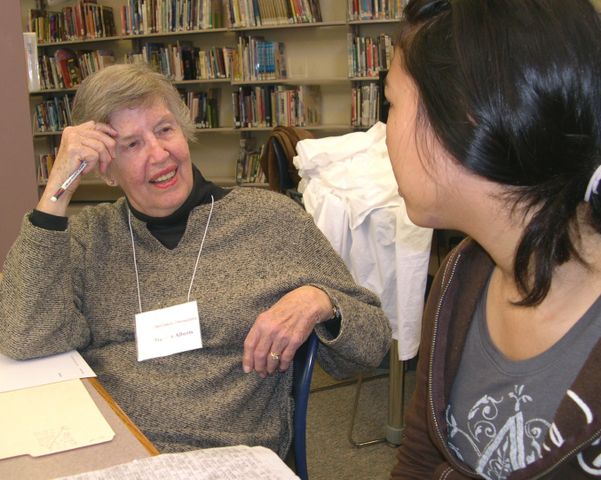
In Oakland we coach at Fremont High School in the Fruitvale and have recently expanded to Oakland School for the Arts. We have a great need for coaches, especially at Fremont High. The commitment is just 1-2 hours per week, 2-4 weeks each month during the school year.
For more info: www.writercoachconnection.com or Camille Graves, Oakland Volunteer Coordinator,oakwcc@gmail.com or 306-1792
|
|
7. SAFE & HEALTHY Oakland
|

FOR YOUR SAFETY
|
CORE Classes
CORE provides free emergency preparedness training for individuals, neighborhood groups and community-  based organizations in Oakland. CORE teaches self-reliance skills and helps neighborhoods establish response teams to take care of the neighborhood after a disaster until professional help arrives. based organizations in Oakland. CORE teaches self-reliance skills and helps neighborhoods establish response teams to take care of the neighborhood after a disaster until professional help arrives.
Here are just a few of the basic CORE courses. Click here for a full Winter class schedule.
CORE I
Thursday, January 23, 6-8:30pm, Rockridge Library, 5536 College Ave
Tuesday, February 4, 6-8:30pm, Holy Names University, 3500 Mountain Blvd
Wednesday, March 26, 6-8:30pm, Dimond Library, 3565 Fruitvale Ave
CORE II
Thursday, January 30, 6-8:30pm, Rockridge Library, 5536 College Ave
Tuesday, February 11, 6-8:30pm, Holy Names University, 3500 Mountain Blvd
Wednesday, April 2, 6-8:30pm, Dimond Library, 3565 Fruitvale Ave
CORE III
Saturday & Sunday, February 22 and 23, 9am-5pm, OFD Training Division, 250 Victory Ct
Register online at www.oaklandcore.org, 238-6351, or core@oaklandnet.com
CORE Citywide Emergency Response Exercise Saturday, April 26  9am - 12pm Please mark your calendars! The Oakland Fire Department, Emergency Management Services Division invites you to participate in the 9th annual CORE Citywide Emergency Response Exercise. The goal of the 2014 CORE Citywide Exercise is to improve the nei ghborhoods' assessment of their needs and resources and to communicate that information. This year we will focus on assessing the neighborhood situation, practicing disaster first aid, and communication at all levels. The 2014 CORE Citywide Exercise Plan will be available in January. We encourage CORE Groups with all levels of experience to participate, from entry to advanced, and the Emergency Management Services Division will provide support for all groups along the way. If you have not yet completed your basic CORE training, there is still time to take CORE I, II and III before the April 2014 Exercise! Three CORE class series are scheduled before the exercise in April. Volunteers who complete CORE III receive a free CORE helmet, vest, ID badge and certificate of completion. If you have already completed CORE I, II and III and would like to pursue advanced training, we will conduct several workshops for CORE graduates before the Exercise, including CORE Refreshers that allow you to practice your emergency response skills and update your CORE ID badge. Remember your certification is good for only two years at a time, so if you completed your training prior to 2012, it's time to renew! For a full schedule of CORE classes and events, please refer to our online schedule at www.oaklandcore.org. You can register online for our free emergency preparedness classes and workshops. For more info: core@oaklandnet.com or 238-6351
BACK TO TOP
|
|
8. GREENING Oakland
|

Friends of Sausal Creek Events
Click here
for a full calendar of events and directions to each event.
State of the Creeks 2014: Erosion Control and Working with the City, Wednesday, January 15, 7pm, Dimond Library, 3565 Fruitvale Ave.
This workshop will help property owners and restoration volunteers learn about simple erosion control techniques for enhancing creekside properties.
For more info: 510-501-3672, coordinator@sausalcreek.org, or click here.
 Garden with Oakland Parks and Recreation, various dates, times, and locations. Garden with Oakland Parks and Recreation, various dates, times, and locations.
Volunteering with the City of Oakland Community Gardening program is a great way to get involved with your community and meet people. There are five regularly scheduled volunteer days every month occurring on Saturdays that correspond with when gardeners meet at the gardens to work on community spaces and projects. Simply show up and lend a hand. There will be someone at each of these days to sign off on service hours. See list below.
Larger groups of volunteers looking to work on a more substantial project are also welcome.
- Arroyo Viejo, Arthur Street and 79th Avenue -- 1st Saturday at 1:30 pm
- Bella Vista Community Garden, Behind Bella Vista School, 1025 E 28th Street -- 2nd Saturday at 2:00 pm
- Bushrod Community Garden, 584 59th Street -- 1st Saturday at 10:00 am
- Golden Gate Community Garden, 1068 62nd Street -- 3rd Saturday at 11:00 am
- Lakeside Park Kitchen Garden, 666 Bellevue Avenue -- 4th Saturday at 9:00 am
- Temescal Community Garden, 876 47th Street -- 2nd Saturday at 10:00 am
- Verdese Carter, Bancroft and 96th Avenue -- 3rd Saturday at 9:00 am
For more info: Peter Collier, 238-2197 or atpcollier@oaklandnet.com or click here.
BACK TO TOP
|
|
9. Kids' Programs & School News
|
EDITOR's NOTE: News about the Oakland Unified School District (OUSD) and the local education community appears in a lot of different places: print, radio, television and online media. OUSD has started collecting the highlights in one easy place: https://www.rebelmouse.com/OUSD/ Check the link regularly.
 OUSD Open Enrollment for 2014-2015 School Year OUSD Open Enrollment for 2014-2015 School Year
The options window for the 2014-2015 year begins Monday, December 9 and runs through Friday, January 17. Apply for kindergarten and other grades.
Click here for all the info.

Want to Make a Difference in Your Community? Consider Teaching in Oakland Schools
Learn more at Teach Tomorrow in Oakland (TTO)
In its continued effort to diversify Oakland's teaching workforce, TTO is now looking for 4-year college graduates, those soon to graduate, and especially those with a STEM (Science, Technology, Engineering and Math) focus. Visit teachtomorrowinoakland.net to learn more about this initiative to help aspiring teachers navigate the credentialing process.
To schedule an appointment: 273.2339
OUSD hosts free speaker series
Starting in November, Oakland Unified is hosting a free speaker series called Race Matters: Putting Race on
the Table. The purpose of the series is to engage in thoughtful dialogue about race and equity in service of improving teaching and learning. All lectures will be held at the Tilden Auditorium, 3752 Enos Street, Oakland, 94619. The last scheduled date and topic is:
- Tuesday, January 14, 4-6 p.m. - lecture on Identify Safe Classrooms: Places to Belong and Learn, with Dorothy Steele and Becki Cohn-Vargas.
For more info: Talibah-Awele.Makeba@ousd.k12.ca.us
BACK TO TOP |
 10. RECURRING Events 10. RECURRING Events |
Oakland Public Libraries sponsor a multitude of events all over the city. Go to this link -- now and often -- for upcoming events of all kinds: www.oaklandlibrary.org/events
Oakland Museum has weekday and weekend events and hands-on activities. First Sundays of the month are free. museumca.org
ART ANTICS

Saturday Stroll, Every Saturday, 1-5pm: Uptown Art Galleries:
www.oaklandartmurmur.org/calendar/saturday-stroll
First Thursday Art Walk, Every First Thursday of the Month, 6-9pm, Grand Avenue from LakePark to Piedmont border.
The Grand Avenue Business District hosts a monthly art event with special discounts from merchants and galleries.
For more info, click here.
1st Saturdays West Oakland Community Fair and Farmers' Market, Saturday, January 4, 11am-3pm, Lowell Park, 12th St.at Filbert, next to the West Oakland Middle School Family Resource Center. An opportunity for the community to come out and access fresh produce, engage in fun and healthy activities, and support the schools and community. A chance to help brand the image of what a vibrant, positive, and active West Oakland should look like.
Castlemont Community Market, Saturday, January 4, 12-3pm, 8711 MacArthur Blvd.
(in front of Youth Uprising, in case of rain market will be held indoors). Help support & grow a NEW monthly event! Join us for: 
- Shopping in your neighborhood
- Jewelry
- Art
- Free kids activities
Be a vendor! Interested in participating in the market?
For more info: Mariela Uribe, mariela.uribe@acgov.org or 208-1223
Jack of All Trades Market, 2nd Saturdays of the month, 11am-5pm, Jack London Square, foot of the Broadway.
The market will feature a curated mix of local makers, indie designers, antiquers, collectors, artists, start-ups and more brought together by the Treasure Island Flea. This eclectic market will feature one-of-a-kind items, live music and several free D-I-Y workshops for all ages. Visitors can bike, ferry or drive to Jack London Square for the market that will take place on the second Saturday of each month.
For more info: www.JackofAllTradesOakland.com
Piedmont Art Walk, Piedmont Avenue, every 3rd Thursday, 6-9pm.
Enjoy Piedmont Avenue's rich and diverse collection of art of all stripes: culinary, music, design, photography, fashion, recycled design and upcycled style, among others.
For more info: www.piedmontavenue.org/avenue-art-walk
|
JUST FOR KIDS
 Tyke Explorers Workshop at Chabot Space & Science Center,Tuesdays, 10am, 12:30pm, or 3pm. Chabot Space & Science Center, 10000 Skyline Blvd. Tyke Explorers Workshop at Chabot Space & Science Center,Tuesdays, 10am, 12:30pm, or 3pm. Chabot Space & Science Center, 10000 Skyline Blvd. For ages 2.5-5 years. Expand your preschooler's universe by enrolling in our Tyke Explorers Program. Kids get to bring a special grown-up to share in the excitement of science and space. Classes are a combination of instructor-led lessons and self-guided, hands-on experimentation and exploration. For more info and monthly workshop listings, click here.
Girls' Sports Days at Oakland Parks & Rec
 League of Women Voters Monthly Hot Topics Roundtable Discussion League of Women Voters Monthly Hot Topics Roundtable Discussion
LWV of Oakland sponsors monthly HOT TOPICS roundtable discussions to inform members and the public and to seek ways everyone can come together to address important issues facing our community.
For more info: www.lwvoakland.org/calendar.html
 Tuesday Toastmasters with Warehouse416 artists and friends, Tuesdays, 7-8am, and NEW TIME: 6:30pm, 416-26th St. Tuesday Toastmasters with Warehouse416 artists and friends, Tuesdays, 7-8am, and NEW TIME: 6:30pm, 416-26th St. Plenty of parking is available. Anyone who needs a parking place can get one here, enjoy an hour of fun, then walk to work. All you need is a job in the area. You are welcome to visit, just to see what it is like.
For more info: Ron Scrivani, scrivanir@aol.com or warehouse416.com
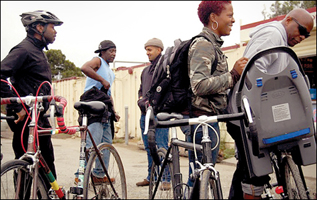 Saturday morning bike ride with Warehouse416 artists and friends, every (dry) Saturday, 8:45am (doors open at 8am), 416 26th St. Saturday morning bike ride with Warehouse416 artists and friends, every (dry) Saturday, 8:45am (doors open at 8am), 416 26th St.
This is a flat, short ride designed to provide new or returning riders with a way of getting started. We will guide you back to the start early, based on your needs. Our full ride is 30 miles and returns to 416 26th by 12:30pm. For more info: Ron Scrivani, scrivanir@aol.com or warehouse416.com
Vintage Porcelain Show, Wednesdays, 10:30am & every 2nd Saturday, 10:30am, & every 2nd Sunday, 2pm, Pardee Home and Museum, 672 11th St.
If you love vintage china, you won't want to miss Mrs. Helen Pardee's collection of exquisite demitasse cups, teacups, and tea pots. Included with cost of tour ($5) or tour with high tea ($25). Reservations required for tea or private tour (min 4).
For more info: 444-2187, www.pardeehome.org
 | |
The Listening Horse designed by our nationally known architect Walter Hood has a magical impact as visitors listen to stories
|
FOR EVERYONE
What I Hear, I Keep: Stories From Oakland's Griots, Wednesday-Saturday until February 2014, 2:30-5:30pm, Peralta House Museum, 2465 34th Ave.
A visual and audio art installation based on African American stories of modern-day Oakland, with local residents telling about their lives and exploring their identities. Hear voices speak about the pluses and minuses of segregation, rituals commemorating the Black Holocaust, combating racism in major league baseball, The De Fermery Recreation Center community, the Black Panthers, the heyday of KJAZ, the Black Native community, and many other iconic contemporary Oakland themes. Cost: $5; free for Fruitvale Community members and children 10 & underFor more info: Peraltahacienda.org
Mexica Dance, every Monday evening, 6-8pm, sponsored by Peralta Hacienda, Center for History and Community, 2488 Coolidge Ave.
All are welcome to discover Mexica culture during ceremony and dance classes open to the public.
For more info: www.peraltahacienda.org
|
|
|
|
|
|

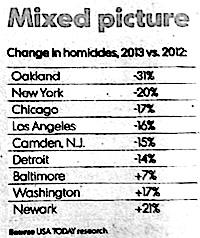











 city of the year! You can nominate and vote for any city you like, but we'd love to see Oakland making it this year as number one!
city of the year! You can nominate and vote for any city you like, but we'd love to see Oakland making it this year as number one! 


 Friday Nights at the Oakland Museum with Off the Grid Food Trucks
Friday Nights at the Oakland Museum with Off the Grid Food Trucks
 1pm, 2501 Harrison St.
1pm, 2501 Harrison St. 



 Piedmont Piano Company Concert Series,
Piedmont Piano Company Concert Series, Chimes; 4499 Piedmont Ave.
Chimes; 4499 Piedmont Ave.


 AT CHABOT SPACE & SCIENCE CENTER
AT CHABOT SPACE & SCIENCE CENTER  Moonlight Hike,
Moonlight Hike,
 Laserium - The Cosmic Laser Concert 40th Anniversary
Laserium - The Cosmic Laser Concert 40th Anniversary  The perfect date night experience is back! By popular demand, our unique after-dark offering has returned. Join us for a full-course dinner in our Skyline Bistro, enjoy our live-narrated Planetarium show Cosmos 360, and view the night sky through our telescopes (weather permitting). Reservations are not required, but strongly encouraged.
The perfect date night experience is back! By popular demand, our unique after-dark offering has returned. Join us for a full-course dinner in our Skyline Bistro, enjoy our live-narrated Planetarium show Cosmos 360, and view the night sky through our telescopes (weather permitting). Reservations are not required, but strongly encouraged. 

 AT OUR PUBLIC LIBRARIES
AT OUR PUBLIC LIBRARIES


 In the Name of Love -- 12th Annual Musical Tribute
In the Name of Love -- 12th Annual Musical Tribute MLK Day of Service at the Gardens at Lake Merritt and Lakeside Park
MLK Day of Service at the Gardens at Lake Merritt and Lakeside Park BBBON District 7 Clean Up on G Street
BBBON District 7 Clean Up on G Street



 In a closely debated council meeting about Latham Square, City Council accepted a staff recommendation to keep the end of Telegraph Avenue open to two-way traffic while expanding the square footage of Latham Park.
In a closely debated council meeting about Latham Square, City Council accepted a staff recommendation to keep the end of Telegraph Avenue open to two-way traffic while expanding the square footage of Latham Park.  New Senior Co-Housing Project Adds to Estuary Revitalization
New Senior Co-Housing Project Adds to Estuary Revitalization

 California Health Insurance Exchange needs your help
California Health Insurance Exchange needs your help


 based organizations in Oakland. CORE teaches self-reliance skills and helps neighborhoods establish response teams to take care of the neighborhood after a disaster until professional help arrives.
based organizations in Oakland. CORE teaches self-reliance skills and helps neighborhoods establish response teams to take care of the neighborhood after a disaster until professional help arrives.

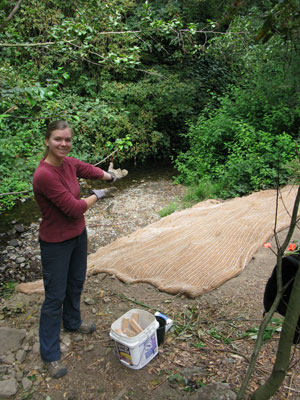
 Garden with Oakland Parks and Recreation, various dates, times, and locations.
Garden with Oakland Parks and Recreation, various dates, times, and locations. 




 League of Women Voters Monthly Hot Topics Roundtable Discussion
League of Women Voters Monthly Hot Topics Roundtable Discussion Tuesday Toastmasters with Warehouse416 artists and friends,
Tuesday Toastmasters with Warehouse416 artists and friends,  Saturday morning bike ride with Warehouse416 artists and friends,
Saturday morning bike ride with Warehouse416 artists and friends, 
